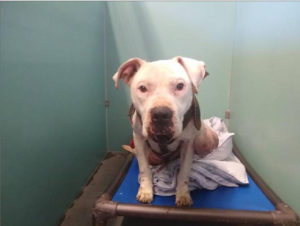 ∙SPAN Thrift Store is providing $10 spays and neuters for low income cat and dog friends.
∙SPAN Thrift Store is providing $10 spays and neuters for low income cat and dog friends.
Two upcoming clinics in September are:
Shiells Park, in the parking lot, located at 649 C St., Fillmore, on Thursday, September 19th and a second one on Thursday, September 26th at SPAN Thrift Store parking lot 110 N. Olive St. (behind Vons on Main). Please call to schedule an appointment (805) 584-3823.
∙A growing upsurge in cannabis-related dog poisonings across Canada has veterinarians calling for increased awareness of the dangers of pets ingesting pot.
More Canadian pets, specifically dogs, are coming in contact with CBD and cannabis according to recent statistics by the Canadian Veterinary Medical Association from the Pet Poison Helpline, which services Canada and the U.S.
“From a formal perspective, we know the numbers are increasing and we know anecdotally that across Canada veterinarians are seeing this on a day to day occurrence” stated Dr. Ian Sandler, member of the Canadian Veterinary Medical Association.
A dog may have sniffed out cannabis on a walk, ingested dried cannabis edibles or oils at home, or even been offered it in some form by their owner, said Sandler.
Your pets can indeed get high, but beyond that are very sensitive to THC, which can be toxic for them if ingested with other ingredients like chocolate, said Sandler.
“I think the biggest issue right now is awareness. In many cases people may be careful when it comes to putting these products in the right place if you will in terms of keeping away from children but they’re not thinking about their four-legged friends.”
The CVMA is pushing to have better safety labels on cannabis products, and be involved in the safe dispensation of potentially helpful cannabis treatments in the future.
∙RedRover’s Pet Disaster Preparedness Tips

September is National Preparedness Month and planning ahead is the key to keeping yourself and your pets safe if disaster strikes. It is important to remember: If it’s not safe for you, it is not safe for your pets. You can follow these tips to make an emergency plan for your pets:
1. Microchip your pets
2. Keep a collar and tag on all cats and dogs
3. Plan a pet-friendly place to stay
4. Use the buddy system: Exchange pet information, evacuation plans and house keys with a few trusted neighbors or nearby friends.
5. Prepare an emergency kit for each animal: To help alleviate some of the stress that happens during an evacuation, we recommend creating and taking an emergency kit for each of your animals if you are forced to leave unexpectedly. You should keep your kit in an easy-to-grab container or bag, and periodically check and update as needed. Here is a list of suggested items to keep in your kit(s):
One-week supply of food. Store food in a water-tight container and rotate it every three months to keep it fresh. If you use canned food, include a spare can opener.
One-week supply of fresh water. If officials declare your household water unfit to drink, it’s also unsafe for your pets. Follow American Red Cross guidelines for storing emergency water for your family and your pets.
Medication. If your animal takes medication, a replacement supply may not be easily available following a disaster.
Copies of vaccination records.
Photographs of you with your pets to prove ownership.
Photographs of your pets in case you need to make “lost pet” fliers.
Temporary ID tags. If you’ve evacuated, use this to record your temporary contact information and/or the phone number of an unaffected friend or relative.
Carrier or leash for each animal. Caregivers of multiple cats or other small animals can use an EvacSak, which is easy to store and use for transport.
Pet first aid kit. (Keep in a waterproof container). This kit can include items such as gauze, adhesive tape, cotton balls, cotton swabs, ice pack, tweezers, antibiotic treatment and more.
6. Identify emergency veterinary facilities outside of your immediate area: If a disaster has affected your community, emergency veterinary facilities may be closed. Pets may become injured or ill during the disaster, so make sure you know how to access other emergency facilities. You can also check with your veterinarian to find out if they have an emergency plan that includes setting up in an alternate, emergency facility.
7. Plan for temporary confinement: Physical structures, like walls, fences and barns may be destroyed during a disaster. Have a plan for keeping your animals safely confined. You may need a tie-out, crate or kennel. Read more tips for ensuring your pets’ safety during an evacuation.
8. Comfort your animals: Your animals will appreciate your calm presence and soft, comforting voice if they are stressed following a disaster or while evacuated, and you may find it comforting to spend time with them, too. Some animals, especially cats, may be too scared to be comforted. Interact with them on their terms. Some animals may find toys, especially long-lasting chew toys, comforting.
9. Know where to search for lost animals: When animals become lost during a disaster, they often end up at a local shelter. Keep the locations and phone numbers of the shelters in your area readily accessible.
10. Get children involved in disaster preparedness plans
Lexi was the service dog of John King, a veteran who had raised Lexi from birth. She was his 24/7 companion and they were seen all over town.
John stated “ I carried her for her final 100 feet and set her on the table. She looked at me with those sweet brown eyes and kissed my nose. She knew her time had come and was telling me goodbye. She rests with the angels now.”
Casper was cared for in his final weeks by Dr. Heather Skogerson, who loved him and did everything to save him. He was loved by Eric, Cappi, Gill, Debi, Betty and Heather. He now rests in peace and finally has an indoor home with his ashes on a mantle piece.


